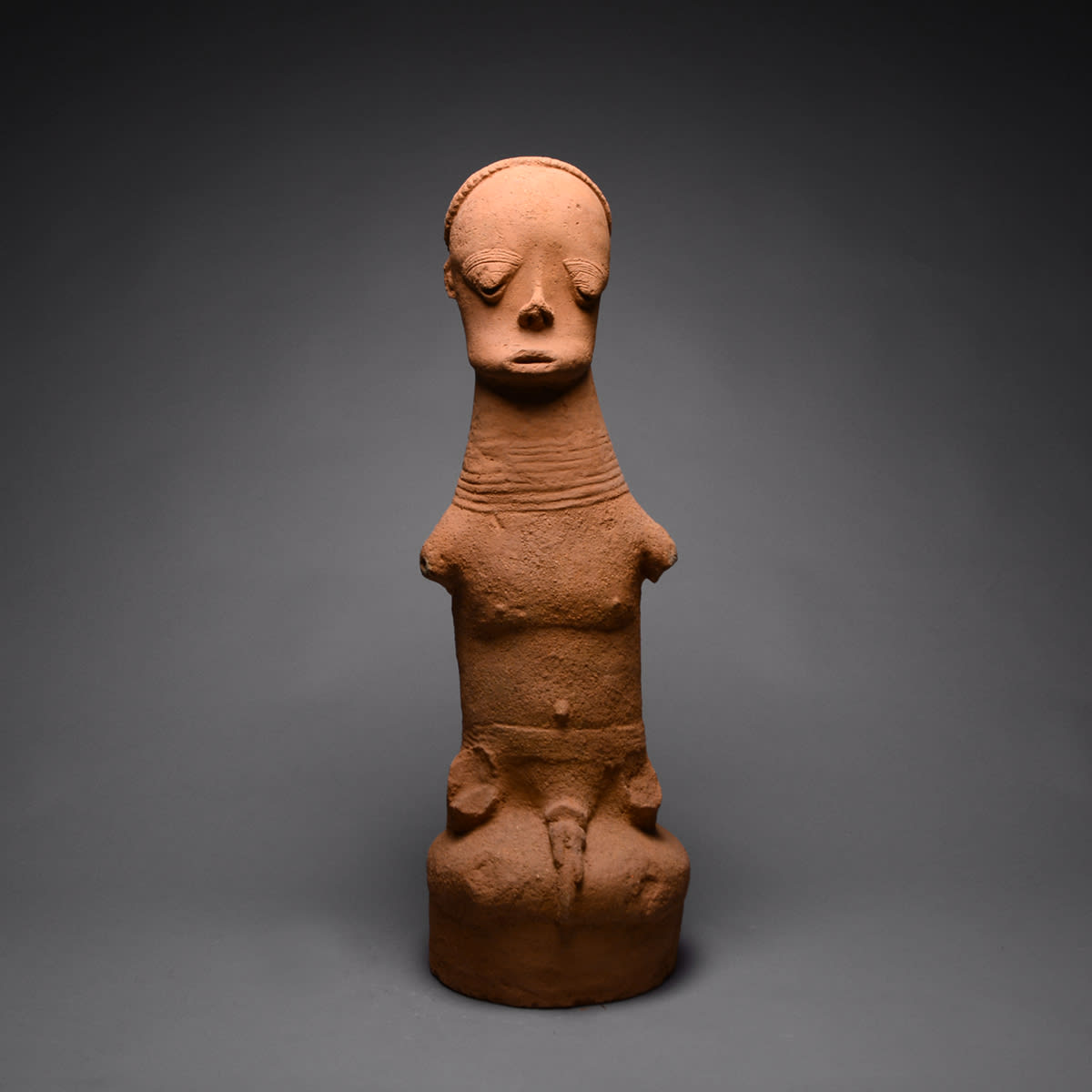Katsina Seated Figure, 200 CE - 900 CE
Terracotta
22.9 x 78.7 cm
9 x 31 in
9 x 31 in
PF.5779
Further images
During archaeological expeditions undertaken in central Nigeria in the 1940’s, the lost Nok culture was unearthed. Known only through their magnificent sculptures, little can be determined about their society and...
During archaeological expeditions undertaken in central Nigeria in the 1940’s, the lost Nok culture was unearthed. Known only through their magnificent sculptures, little can be determined about their society and customs. However, more recently, new finds have been discovered in the north of Nigeria. These sculptures, called Sokoto and Katsina after the towns nearby where they were discovered, reveal stylistic similarities to Nok works, both in the composition of the material and of the form. Clearly, these different cultures were all related and influenced each other. After all, these works together are the oldest artifacts found in Africa outside of Egypt. Much of what constitutes the Nok style survives today in the sculptures and masks of contemporary African tribes.
This large memorial sculpture is typical of the Katsina style. Although the figure's small limbs are fragmented, we can ascertain their original posture from other examples. Seated figures most often rest their hands on their shallow, bent knees. Generally, the limbs were not emphasized, instead the artist focused primarily on the head and then on the torso. The small, beady eyes with their sagging, overhanging eyelids are characteristic of the Katsina style, as are the spherical coiffure and the lack of jewelry or other adornments. Thermoluminescence tests conducted by the Daybreak Archaeometric Laboratory validate the approximate dating of the firing of the clay. This remarkable sculpture speaks more than we can comprehend. While we can appreciate its aesthetic beauty and treasure its age, we will likely never know the history or practices of the culture that shaped it. However, this statue survives, a reminder of the vast richness and beauty of our common cultural heritage.
This large memorial sculpture is typical of the Katsina style. Although the figure's small limbs are fragmented, we can ascertain their original posture from other examples. Seated figures most often rest their hands on their shallow, bent knees. Generally, the limbs were not emphasized, instead the artist focused primarily on the head and then on the torso. The small, beady eyes with their sagging, overhanging eyelids are characteristic of the Katsina style, as are the spherical coiffure and the lack of jewelry or other adornments. Thermoluminescence tests conducted by the Daybreak Archaeometric Laboratory validate the approximate dating of the firing of the clay. This remarkable sculpture speaks more than we can comprehend. While we can appreciate its aesthetic beauty and treasure its age, we will likely never know the history or practices of the culture that shaped it. However, this statue survives, a reminder of the vast richness and beauty of our common cultural heritage.





